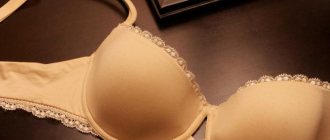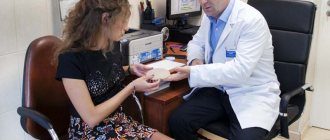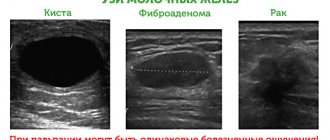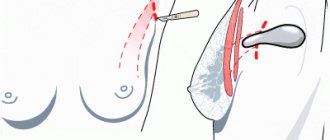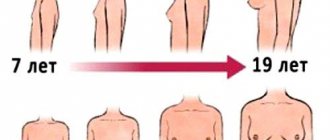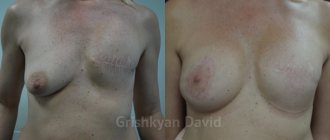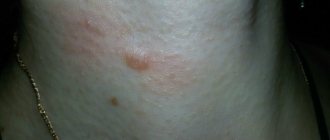Breast cancer is a malignant neoplasm in the breast area. Among all cancer diseases, it occupies a leading position. According to statistics, more than 1,500,000 women around the world suffer from this pathology. Every year, approximately 1,250,000 new cases of breast cancer are registered worldwide, of which 54,000 are in Russia. Rehabilitation physician Emmy Want from Illinois, USA, wrote in the Physical Therapy Journal: “Today, rehabilitation after cancer removal is a rapidly growing area in medicine. And this is not surprising - the number of cancer survivors is increasing every year. According to WHO, the five-year survival rate after breast cancer in the world is 89%, ten-year - 82%, fifteen-year - 77%. In the United States alone, the estimated number of cancer patients is 13 million, and the number of patients with this disease is growing. Given early diagnosis and timely treatment, the number of cancer survivors is growing. This means that the need for rehabilitation measures will also increase”
What does rehabilitation after surgical treatment of breast cancer (BC) include, specialists from the Federal State Budgetary Institution “National Medical Research Center of Oncology named after. N.N. Blokhin" of the Ministry of Health of the Russian Federation and the non-profit service "Clear Morning".
You won, what's next?
Rehabilitation doctor, candidate of medical sciences, head of the rehabilitation department Olga Obukhova and rehabilitation doctor Marina Khulamkhanova State Budgetary Institution "National Medical Research Center of Oncology named after. N.N. Blokhin" of the Ministry of Health of the Russian Federation: - The treatment plan for each patient is determined at a consultation with the participation of a surgeon, chemotherapist and radiologist.
Treatment of breast cancer includes local treatment (surgery, radiation therapy) and systemic treatment (chemotherapy, hormone therapy, targeted therapy). Surgery to remove the breast is called a mastectomy. This is usually only part of the comprehensive treatment prescribed to women diagnosed with breast cancer. Its goal is to prevent the spread of the cancer process. Breast removal in women is achieved by completely removing the tissue of the gland itself, the surrounding subcutaneous fat and lymph nodes.
The operation is traumatic for the body, but overall health is restored quite quickly. By the evening after the operation (by agreement with the attending physician), you can sit up in bed and get up on the second day. If your health allows, you can carefully move around the room and go to the toilet on your own. On the 3rd–4th day after the operation, the state of health becomes normal. The length of hospitalization after surgery averages 10–21 days.
It's not bad without breasts
Women who have undergone breast removal tell how long after the operation they were afraid to look at themselves in the mirror. And when they saw their reflection, they concluded: “I’m a freak.” Hair loss after chemotherapy is added to the scar at the site of the chest. The woman ceases to feel attractive, depression progresses.
Yulia Kabitsina believes that you need to seek psychological help as early as possible. Preferably at the examination stage, when the diagnosis has not even been confirmed. Women can more easily endure the doctor’s terrible words and subsequent treatment under the supervision of a psychologist. She speaks about the importance of not only psychological, but also physiological correction: “All women are different, but if thoughts about breast reconstruction come to mind, then it needs to be done. There are no options here."
Ekaterina (name changed) was diagnosed with breast cancer in 2016. She was indicated for a mastectomy. According to her quota, she went for an operation in St. Petersburg (today it has become much more difficult to go to another region for treatment), where she underwent a one-stage reconstruction and plastic surgery of her healthy breast. My husband paid for it. Men, Yulia Kabitsina believes, play an important role in the rehabilitation of women after cancer. And it's not always about money. It's about acceptance, understanding and love.
Tanya (remember, ward No. 6, Vladimir Oncology Center?) had no understanding, no acceptance, no money, no psychologist, no information. Now she doesn't have breasts either. She wears a prosthesis to important events. By the way, in Vladimir the only point in the city where you could buy it was closed. They say it's because of quarantine. The rest of the time, Tatyana wears shapeless clothes.
“Mad Tristan” by Salvador Dalí, 1944. Photo: Salvador Dalí, Fundació Gala-Salvador Dalí, UPRAVIS, Moscow, 2019
Yulia Kabitsina had such a patient: she wore robes, didn’t take care of herself, threw herself into her work, and claimed that she was fine without breasts. “Depression manifests itself in this way, and it’s important not to miss it,” says the oncologist. “Lack of interest in your appearance, sublimation at work, family or something else - these are alarm bells, you need to work with it.”
Beginning rehabilitation after mastectomy
Before discharge from the hospital, patients are given recommendations for further treatment and follow-up. Rehabilitation begins immediately after the operation and includes physical therapy, massage, physiotherapy of various volumes, psychotherapy, and, later, after removal of the stitches, wearing a properly selected prosthesis and underwear. Surgical treatment of a particular volume (organ-preserving or complete removal of the mammary gland) often leads to postoperative complications and functional disorders - a decrease in the range of movements in the upper limb on the side of the operation, swelling (lymphostasis) of the upper limb and chest, pain, poor posture, weakness , soft tissue dysfunction, pain, fatigue.
Carrying out full rehabilitation in such patients helps accelerate the healing process of the postoperative wound; reducing swelling in the surgical area; improving lymph outflow; restoration of conductivity in nerve structures affected by trauma or compression; reduction of pain syndrome; prevention of development and elimination of already formed stiffness and contracture. To achieve this, a special massage is performed, a specially developed complex of physical therapy is prescribed, and physiotherapy procedures are permitted for such patients.
After operation
Incisions (surgical incisions)
- After surgery is complete, your incisions will be closed with either absorbable or non-absorbable staples or stitches.
- If you have dissolvable sutures, they will dissolve on their own. They don't need to be removed.
- If your incisions were closed with non-absorbable stitches, your healthcare provider will remove them approximately 2 weeks after surgery.
- You may also have thin strips of surgical tape (Steri-Strips™) placed over your incisions. They will move away and disappear on their own.
- You will have a gauze bandage placed over the incisions. It will be held in place by the bra. Change the bandage as needed (for example, if it becomes dirty, wet, especially when a large amount of fluid is secreted), and also after a shower.
Release of fluid
- A small amount of bloody fluid may ooze from the incisions for a few days after surgery. This is fine.
- Sometimes, especially after a shower, more of this fluid may be released.
- If your breasts leak too much fluid or become bright red or bloody, or if your breasts become firm or swollen in a short period of time, place an extra pad in your surgical bra and call your healthcare provider.
- The lower portion of the breast, where the incisions meet, may take a little longer to heal than other incisions.
Jackson-Pratt® Drain (JP)
You may have a JP drain installed at the time of discharge. The JP drain is a small egg-shaped container connected to a tube in the chest. It helps drain fluid from the surgical incision.
If you have a JP drain, your healthcare provider will give you more information about it, including how long you should wear it. Before you leave the hospital, he/she will also teach you how to care for your drainage system and give you the Jackson-Pratt Drainage System Care resource.
to come back to the beginning
Compression sleeve after mastectomy
Compression therapy is the basis for the treatment and prevention of lymphedema (“lymph stagnation”). Only a rehabilitation specialist can help you choose the right model of compression hosiery. Compression underwear will bring relief to a woman in a short time: it will relieve swelling, reduce pain, thereby increasing the quality of life. When swimming in the pool and doing therapeutic exercises, wearing a compression sleeve is mandatory. But there are some contraindications to compression therapy: erysipelas, severe pain.
What questions should you ask your plastic surgeon?
Make sure you have all the information you need and that all your questions are answered. Only then will you be able to make a truly informed decision. It is best to write down pressing questions on paper . Notes taken during medical consultations will also be useful. Take a relative or friend with you. A loved one will help you remember all the doctor's recommendations and provide additional support.
You may want to ask your plastic surgeon the following questions:
- Can I choose immediate breast reconstruction?
- Which reconstruction method suits me best and why?
- What are the benefits, limitations, and risks associated with this surgery?
- When can I have surgery?
- How long will you need to spend in the hospital?
- How long does rehabilitation last after such a procedure?
- When will I be able to move, walk and drive normally?
- How painful will the surgery be?
- Can you show me where the scars will be located and how big they will be?
- Will I have scars on other parts of my body?
- Will it be possible to save the nipple?
- What if the reconstruction means you have to delay cancer treatments, such as chemotherapy and radiation?
- When can I play sports again?
- Can you show photographs of breast reconstructions from your practice?
- Is it possible for me to talk to someone who has had the same type of reconstruction?
- Will I need a special bra after surgery?
- Where to find a plastic surgeon?
If you wish, you can contact the hotline for breast cancer treatment in Israel – +972-3-376-03-58 (Tel Aviv) and +7-495-777-6953 (Moscow).
Exoprostheses and special underwear after mastectomy
Exoprostheses are artificial overlays made of soft materials. They imitate the shape and size of the patient's real breasts. Exoprostheses are selected individually for each woman and are worn continuously after the permission of the attending physician. A correctly selected exoprosthesis will give a woman confidence, and will also become a therapeutic and prophylactic means of rapid post-operative adaptation.
The exoprosthesis compensates for weight imbalance, preventing secondary body deformations such as curvature of the spine, drooping shoulders, and poor posture. It is also worth noting the importance of special underwear that will secure the exoprosthesis. Special bras are worn together with exoprostheses. They provide safety and comfort when wearing exoprostheses.
The straps of special bras are padded, widened in the shoulder area, do not cut into the skin, and reduce pressure on the shoulders, preventing lymphedema. The underwear should fit tightly so that the prosthesis does not change position when moving and bending.
Advantages of the EMC Clinic
Reconstructive breast surgery is another powerful area in which the Aesthetic Clinic of the European Medical Center is developing. With the participation of a plastic and reconstructive surgeon, Professor Kirill Pshenisnov, complex reconstructive interventions are performed, allowing women to restore their breasts after a mastectomy, thereby better rehabilitating after an illness and regaining self-confidence.
Breast reconstruction is performed not only to restore the aesthetic shape of the breasts, but also to prevent body deformation due to weight imbalance after mastectomy.
To have an operation at the EMC clinic means to trust the hands of recognized specialists and be confident in the result of the operation.
Time for a silicone prosthesis
Of course, patients are concerned about the question of when they will be able to purchase silicone prostheses. Wearing them is not recommended in the first days after surgery. Silicone prostheses are contraindicated for women undergoing radiation and chemotherapy. During this period, the sensitivity of scars and skin around the stitches increases, and sweating increases. Silicone pads do not absorb moisture well, so they can rub and cause inflammation. We recommend fabric prostheses, which do not irritate the skin and speed up recovery. Today, it is possible to perform reconstructive operations (simultaneous or delayed) using silicone endoprostheses. The tactics of such treatment should be discussed with your doctor.
TRAM-plasty (using a skin-fat flap of the transverse rectus abdominis muscle)
The TRAM skin-fat flap (transverse rectus abdominis muscle), which is cut from the lower abdomen, is similar to breast tissue and takes root well. The surgeon transfers the flap to the recipient site, where he forms a breast from it. You can either cut the flap so as to preserve the blood vessels feeding it from the donor site (pedicle flap); or cut out completely (free flap) and transplant it through microsurgery.
TRAM-plasty surgery can be offered to patients with sufficient abdominal mass who do not want to have implants installed. The advantage of this method is the natural appearance of the mammary gland. However, there will be a scar in the “donor” area of the abdomen.
It is possible to perform TRAM-plasty with subcutaneous mastectomy; with subcutaneous/skin-sparing mastectomy and lymph node dissection; delayed type.
TDL-plasty (using a skin-fat flap of the dorsal muscle)
This method of breast reconstruction after surgery is applicable when it is necessary to remove a large area of breast skin. A flap of the back muscle or a flap of tissue under the arm is transplanted. It is possible to move on a vascular or vascular-muscular pedicle. Due to the thinness of the flap, its transplantation is combined with the installation of an implant, which allows the reconstructed breast to be given greater volume and a more natural shape.
TDL-plasty is possible with subcutaneous mastectomy, with subcutaneous mastectomy and installation of an implant/expander, with delayed reconstruction after mastectomy.
Plastic surgery with “inverted flap”
A skin-fat flap is cut out directly from the area under the breast and moved to the recipient field. Restoration with an implant is also possible. The advantage of the technology is the absence of additional seams. This operation was introduced into practice by reconstructive plastic surgeon T.V. Mavrodi.
Subcutaneous mastectomy with lymph node dissection (removal of lymph nodes)
During this operation, the mammary gland is removed, but the skin of the breast is preserved; if possible, along with the nipple and areola. The method allows you to restore the breast after surgery using an implant/expander, incl. Becker Spectra implant, or using autologous tissue grafting.
Plastic surgeons at Clinic No. 1 use innovative developments from Mentor—the Becker series expanders. These endoprostheses combine the functions of an expander and an implant. They consist of two chambers, one of which is filled with gel, and the other is gradually filled with saline solution through an outlet port (tube). Thus, two stages are combined - stretching the breast tissue using an expander and installing an implant. The outlet port is removed once the required volume has been reached. The implant remains in place.
What is prohibited after a mastectomy
There are many recommendations for preventing complications after surgery. It is better to consult with a specialist on this matter in each specific case. To name just a few: DO NOT : measure the pressure on the arm on the side of the operation, wear rings, thick bracelets, watches, sleeves with elastic bands, bags on the elbow or shoulder, lift more than 2 kg with the hand on the side of the operation. DO NOT: sleep on the arm on the side of the operation. DO NOT: take blood or perform infusions on the arm on the side of the operation.
The essence of the method of breast reconstruction using lipofilling
Our clinic has developed a technique that allows women to recreate lost breasts. The difficulty of reconstructive surgery often lies in the fact that the tissues lose their elasticity, and rough scars exist not only on the outside, but also on the inside. Therefore, the first stage of the operation is tissue preparation, which we carry out using the American BRAVA system. Thanks to the BRAVA system, we are able to stretch and prepare the skin, as well as gain space for the subsequent introduction of a fat graft into the breast (lipofilling) and improve the survival of fat cells in the postoperative period.
The next step is to restore the breasts with our own fat cells, which we take from the patient’s donor areas, thereby creating a fat layer that will later allow us to get natural breasts. In addition, adipose tissue has other advantages: it secretes growth factor, which has a beneficial therapeutic effect on scars in the transplantation area.
The last stage is the formation of the nipple and areola. In many cases, it is necessary to perform surgery on both mammary glands at once in order to achieve symmetry. To do this, if necessary, a second breast lift, reduction or prosthetics is performed. Our method allows you to carefully and correctly restore the mammary glands, without leaving additional scars or scars on the body. Usually, operated patients (even those who had some doubts before the operation) would never take a step back - their moral and aesthetic satisfaction is truly great.
- In preparation for surgery, the patient wears special vacuum external expanders, often at night.
- To stretch the skin and create a reservoir, as well as improve tissue health, the first stage of lipofilling is performed. The fat tissue obtained during liposuction is prepared and injected into the breast area.
- To form the required shape and volume, an additional fat autograft is introduced into the already prepared tissues. At the patient's request, breast prosthetics are performed. Often a simultaneous operation is required on a healthy breast to create symmetry.
- A vacuum system of external expanders is used to ensure engraftment of the injected fat cells.
Diet and nutrition after mastectomy
There are no reliably studied diets that would be recommended for women after breast cancer treatment. However, it is better to exclude some foods from the diet: fatty foods, preservatives, alcohol. It is believed that the introduction of omega-3 fatty acids (fish oil), selenium and vitamin D into the diet in daily dosages makes it easier to tolerate antitumor therapy.
Rehabilitation advice from Western specialists. WebMd magazine in rehabilitation focuses on proper nutrition and movement. At the end of 2022, the magazine published the basic rules for selecting a diet for patients after a mastectomy: Eating in small portions will help cope with loss of appetite, nausea, and weakness after surgery. Avoid solid foods at first; it is better to include yogurt and kefir in your diet. Women after a mastectomy need protein, a building material, an “assistant” in restoring strength and fighting infection. Lean meat is rich in protein. Despite the usefulness of cheese and nuts, excessive indulgence in them is fraught with the development of pancreatitis. Antioxidants protect cells from damage. They are found in broccoli, blueberries, carrots, liver, mangoes, tomatoes, and apricots. Western and Russian doctors say that everything is useful, but in moderation. Abuse is unacceptable, because the opposite of the desired effect may occur!
It is also known that there is no panacea for cancer. Treating oncology means being observed by a doctor and strictly following his recommendations.
SINGLE-STAGE BREAST RESTORATION OPERATIONS (IN 1 STAGE)
When choosing this method, the patient is spared severe psychological stress, which can manifest itself if she sees a breast that is partially or completely amputated after surgery.
When performing breast surgery after mastectomy in stage 1, there is no need for repeated surgical intervention, there are no additional scars, and emotional discomfort is minimal. However, there is also a minus – possible complications due to the fact that the implant sometimes does not take root. Skin tissues are under tension. Repeated surgery is required.
A one-stage operation is a heavy burden on a woman’s body, so this type of operation is recommended only for sparing mastectomy.
One-stage breast reconstruction operations after mastectomy can be divided into 3 types:
- Own tissues (auto tissues). When using autologous tissues, it is possible to recreate fairly large volumes of mammary glands.
- Using implants and expanders. When reconstructing the breast, we use modern cohesive silicone prostheses. The implant, filled with silicone gel, imitates human subcutaneous fat, looks natural and feels like real breast tissue. The operation to install this type of implant is less painful and traumatic. Special barrier layers of the prosthesis prevent rupture of its shell and release of the gel.
- Automatic fabrics + implants (expanders)
DELAYED OPERATIONS (IN 2 STAGES)
This type of breast surgery after mastectomy is very common. Reconstruction involves the initial installation of a tissue expander (expander) followed by its replacement with a prosthesis. An expander is a silicone balloon into which a physiological (saline) solution is gradually poured. This is done in order to gradually (over 2-6 months) stretch the breast tissue and subsequently install an implant. There are also expanders that are used as implants. Removal of the expander and installation of the implant is a technically simple and minimally traumatic operation. At the last stage of reconstructive surgery, the nipple and areola are formed using an expander.
Very often, patients hope for a one-stage operation, wanting to reduce pain and psychological risks. However, this is not always possible! The advantage of a 2-stage operation is a more accurate selection of the volume of the gland to be created. By replacing the expander with an implant, you can achieve maximum breast symmetry. With two surgical interventions, the second one is much easier than the first and only one.
Sports, cottage, sea after mammary gland removal
Exercising is beneficial for the physical and mental health of women after completion of treatment. Swimming and water aerobics, Nordic walking are especially suitable. Avoid sports that involve repeated energetic, counteracting movements of the hand on the side of the operation (tennis, etc.), strong temperature fluctuations (skis, skates). It is also better to exclude traumatic sports, basketball, volleyball, wrestling.
After removal of the mammary gland, with the permission of the doctor, it is necessary to engage in physical exercise. Weight gain is a chance for breast cancer to return. It's worth starting with walks. The main exercise therapy complex: 1. Before gymnastics, be sure to warm up your muscles: 1) Sitting with your hands on your knees, clench your fingers into a fist as tightly as possible, then unclench, relax and repeat 5-7 times. 2) Sitting, arms bent at the elbows, fingers relaxed: turn the palms with the back side up, then smoothly raise and lower the palms 7-10 times. 3) Hands on shoulders, smoothly raise and lower elbows, 7-10 times. 4) We press our hands to the body, smoothly raise and lower them, 7-10 times. 2. After the warm-up is completed, the main complex. 1) Alternately strain and relax the muscles of the arm.
We try to stay in the tension phase for at least 3–4 seconds. 2) Straighten your arm in front of you, then move it to the side and lower it. When stretching, inhale; when lowering, exhale. 3) Hands on the shoulders, smoothly make circular movements clockwise, then counterclockwise. 4) Place your wrists behind your back and slowly stretch your shoulder blades back. 5) Hands are lowered, we alternately make circular movements with the shoulder joint, first clockwise, then counterclockwise. 6) While sitting, we try to raise the arm from the operated side. During the first lessons, you can help her with your other hand. 7) We bend the body to the side of the operated side, linger for a couple of seconds in this position and return to the starting position. When bending, exhale; when straightening, inhale. We lean our backs on the wall, raise our arms and try to spread them to the sides. 9) With your back against the wall, raise your arm from the operated side up and linger in this position for a little while. Each time we try to reach with this hand a little higher than in the previous lesson.
Wear gloves when doing housework, gardening, or other work that may cause even minimal damage. Try to avoid any injury to the arm on the side of surgery (bumps, cuts, sun or other burns, sports injuries, insect bites, scrapes). Traumatization of the skin of the operated hand is dangerous due to infection and the development of erysipelas. Regarding a holiday at sea, climate change (a trip to the south) - discuss with your doctor, because this is decided individually and only after completion of treatment.
Types of mastectomy
The extent of surgical intervention depends on the stage, type, size and location of the malignant tumor. In some cases, a woman’s personal choice may also be taken into account.
Partial mastectomy (breast resection)
Partial mastectomy is an organ-conserving operation. It can be done in the early stages. During the intervention, the surgeon removes the malignant tumor and some surrounding tissue.
In most cases, with operable breast cancer, a woman has a choice between a mastectomy and breast-conserving surgery. Studies have shown that breast resection followed by radiation therapy is not associated with a higher risk of recurrence compared with a complete mastectomy.
Talk to your doctor. Ask what type of surgery is indicated in your case, whether there is a choice, which option would be optimal.
Complete mastectomy
Complete removal of the mammary gland is indicated in the following cases:
- When the tumor size is large relative to the size of the mammary gland.
- More than one tumor node in the breast.
- If a woman is contraindicated for radiation therapy or she herself refuses it.
- If a woman prefers a more radical operation because she is worried about a higher risk of recurrence after a partial mastectomy.
What about regional lymph nodes? Maybe the tumor has managed to spread into them, and they also need to be removed? Previously, in any doubtful cases, doctors played it safe and performed lymph node dissection. Today there is a procedure called sentinel lymph node biopsy. During surgery, the surgeon injects a radiopharmaceutical or fluorescent dye into the tumor. Then they check which lymph node the drug reached first. It is removed and a biopsy is performed. If no tumor cells are found in it, it means that the tumor has not spread to other regional lymph nodes, and they do not need to be removed.
Rehabilitation time after mastectomy
The duration of rehabilitation depends on the functional disorders that arise after surgery. During rehabilitation, good psychological support from family and friends is important. This helps a woman quickly adapt to a new life situation. In oncology, it is very important after treatment to undergo regular follow-up examinations as prescribed by the doctor. After primary treatment, it is recommended to conduct examinations 1 to 4 times a year (depending on the specific clinical situation) during the first 5 years, then annually thereafter.
How to prepare for surgery
General preparation for breast reconstruction surgery includes a preoperative examination, which includes:
- blood analysis;
- Analysis of urine;
- ECG;
- chest x-ray;
- conclusion of a mammologist-oncologist with the necessary tests.
The patient can undergo the entire list of tests at EMC. Other additional studies and recommendations regarding lifestyle and medication are prescribed individually.



